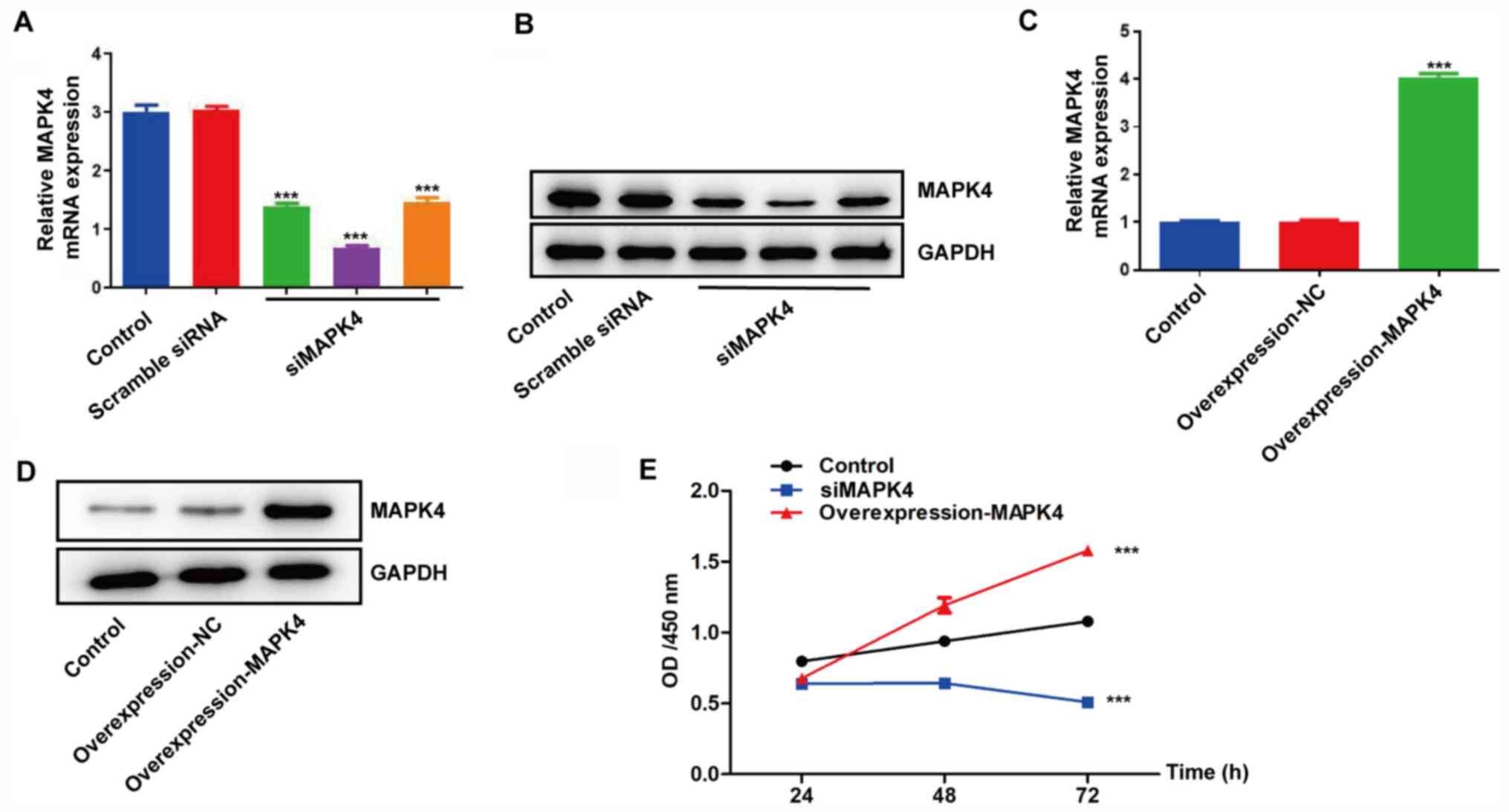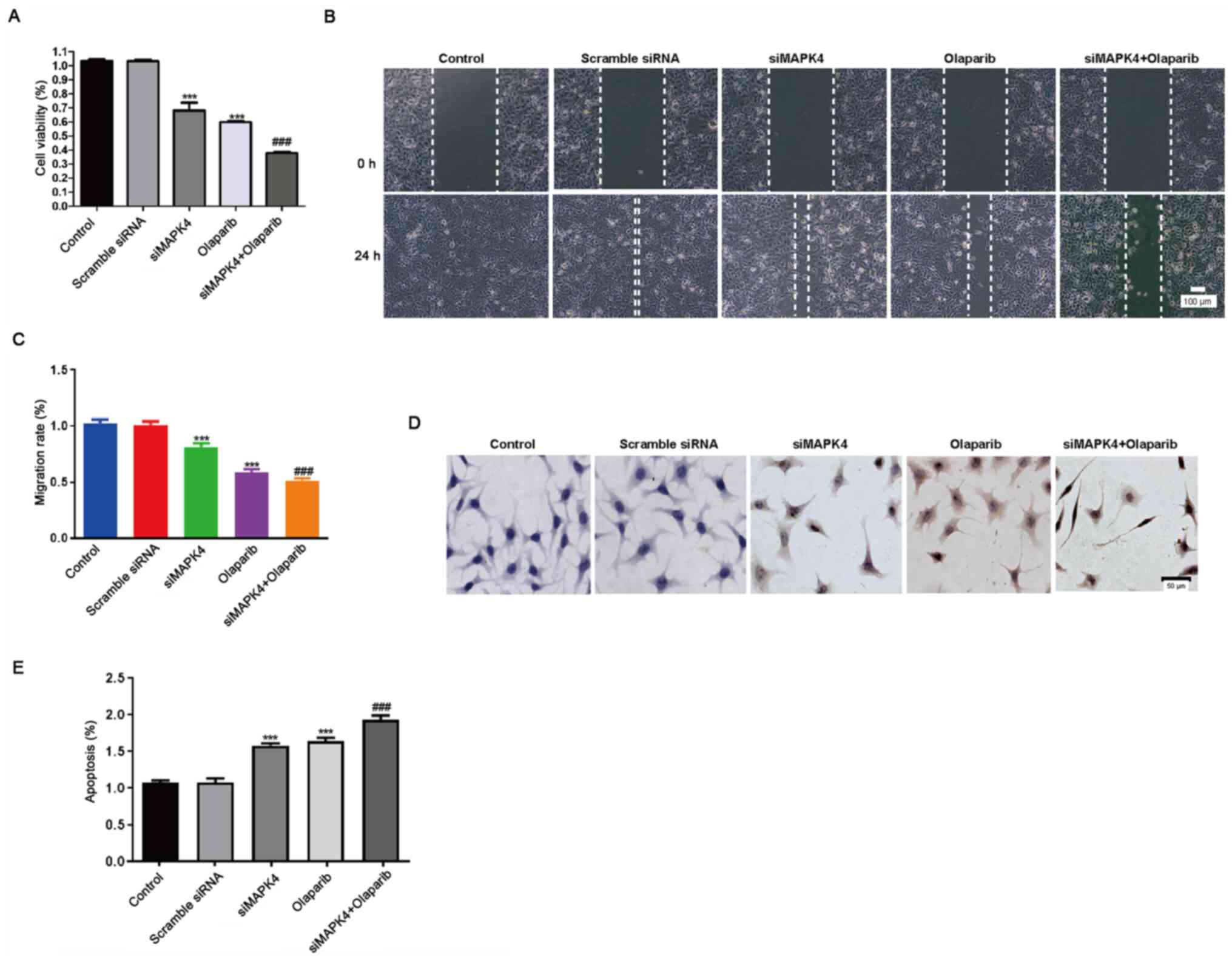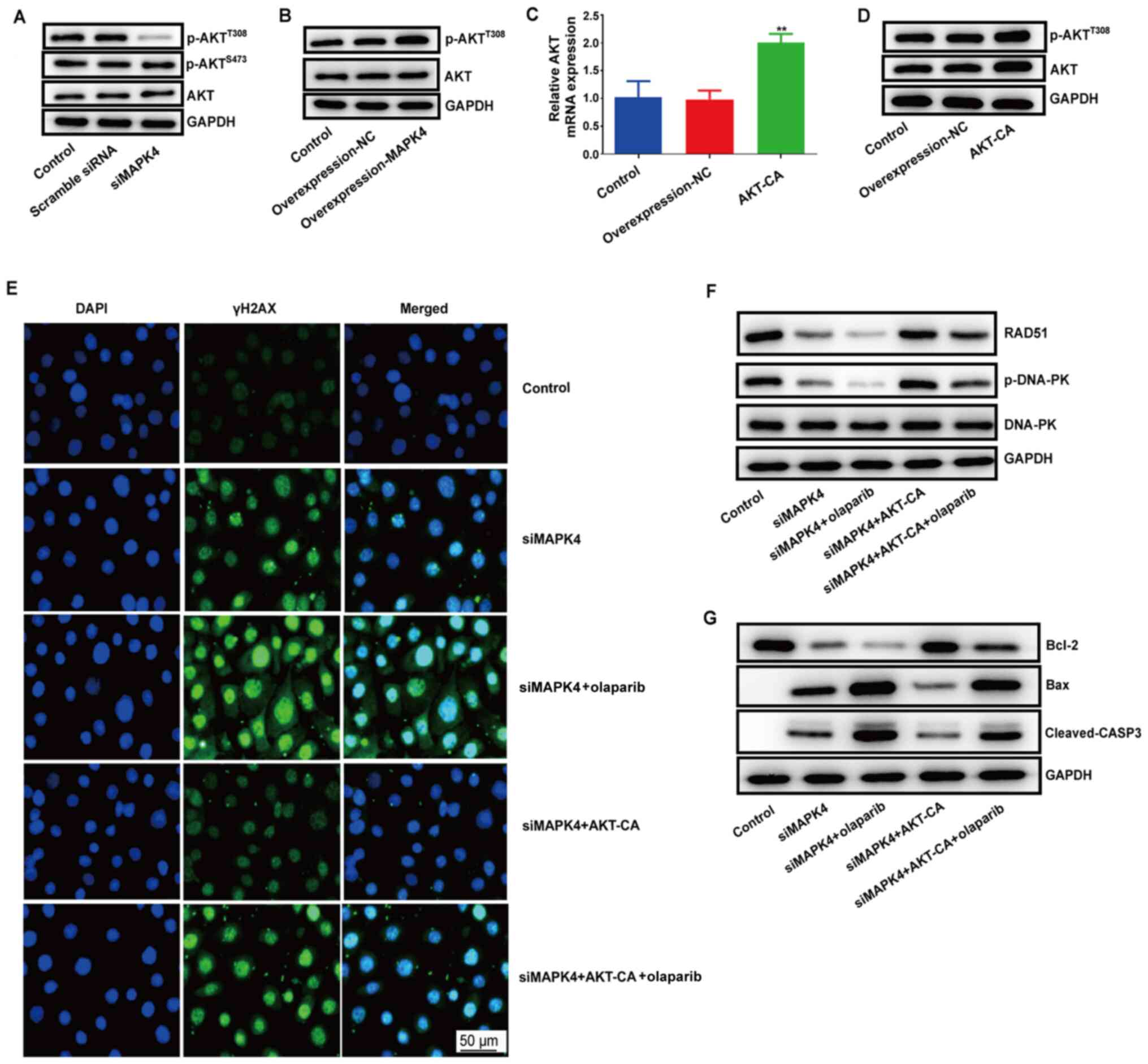|
1
|
Bray F, Ferlay J, Soerjomataram I, Siegel
RL, Torre LA and Jemal A: Global cancer statistics 2018: GLOBOCAN
estimates of incidence and mortality worldwide for 36 cancers in
185 countries. CA Cancer J Clin. 68:394–424. 2018. View Article : Google Scholar : PubMed/NCBI
|
|
2
|
World Health Organization (WHO), . Cancer.
https://www.who.int/news-room/fact-sheets/detail/cancerMarch
3–2021
|
|
3
|
Gluz O, Liedtke C, Gottschalk N, Pusztai
L, Nitz U and Harbeck N: Triple-negative breast cancer-current
status and future directions. Ann Oncol. 20:1913–1927. 2009.
View Article : Google Scholar : PubMed/NCBI
|
|
4
|
Foulkes WD, Smith IE and Reis-Filho JS:
Triple-negative breast cancer. N Engl J Med. 363:1938–1948. 2010.
View Article : Google Scholar : PubMed/NCBI
|
|
5
|
Vagia E, Mahalingam D and Cristofanilli M:
The landscape of targeted therapies in TNBC. Cancers (Basel).
12:9162020. View Article : Google Scholar : PubMed/NCBI
|
|
6
|
Coulombe P and Meloche S: Atypical
mitogen-activated protein kinases: Structure, regulation and
functions. Biochim Biophys Acta. 1773:1376–1387. 2007. View Article : Google Scholar : PubMed/NCBI
|
|
7
|
Lee BD, Park JM, Lee YM, Moon ES, Jeong
HJ, Chung YI and Rim HD: A pilot study for discovering candidate
genes of chromosome 18q21 in methamphetamine abusers: Case-control
association study. Clin Psychopharmacol Neurosci. 12:54–64. 2014.
View Article : Google Scholar : PubMed/NCBI
|
|
8
|
Cancer Genome Atlas Research Network, ;
Weinstein JN, Collisson EA, Mills GB, Shaw KR, Ozenberger BA,
Ellrott K, Shmulevich I, Sander C and Stuart JM: The cancer genome
atlas pan-cancer analysis project. Nat Genet. 45:1113–1120. 2013.
View Article : Google Scholar : PubMed/NCBI
|
|
9
|
Wang W, Shen T, Dong B, Creighton CJ, Meng
Y, Zhou W, Shi Q, Zhou H, Zhang Y, Moore DD and Yang F: MAPK4
overexpression promotes tumor progression via noncanonical
activation of AKT/mTOR signaling. J Clin Invest. 129:1015–1029.
2019. View
Article : Google Scholar : PubMed/NCBI
|
|
10
|
Feng Y, Zhang L, Wu J, Khadka B, Fang Z,
Gu J, Tang B, Xiao R, Pan G and Liu J: CircRNA circ_0000190
inhibits the progression of multiple myeloma through modulating
miR-767-5p/MAPK4 pathway. J Exp Clin Cancer Res. 38:542019.
View Article : Google Scholar : PubMed/NCBI
|
|
11
|
He J, Huang Z, He M, Liao J, Zhang Q, Wang
S, Xie L, Ouyang L, Koeffler HP, Yin D and Liu A: Circular RNA
MAPK4 (circ-MAPK4) inhibits cell apoptosis via MAPK signaling
pathway by sponging miR-125a-3p in gliomas. Mol Cancer. 19:172020.
View Article : Google Scholar : PubMed/NCBI
|
|
12
|
Piscitello D, Varshney D, Lilla S, Vizioli
MG, Reid C, Gorbunova V, Seluanov A, Gillespie DA and Adams PD: AKT
overactivation can suppress DNA repair via p70S6 kinase-dependent
downregulation of MRE11. Oncogene. 37:427–438. 2018. View Article : Google Scholar : PubMed/NCBI
|
|
13
|
Zhang Y, Xie C, Li A, Vizioli MG, Reid C,
Gorbunova V, Seluanov A, Gillespie DA and Adams PD: PKI-587
enhances chemosensitivity of oxaliplatin in hepatocellular
carcinoma through suppressing DNA damage repair pathway (NHEJ and
HR) and PI3K/AKT/mTOR pathway. Am J Transl Res. 11:5134–5149.
2019.PubMed/NCBI
|
|
14
|
Ali R, Rakha EA, Madhusudan S and Bryant
HE: DNA damage repair in breast cancer and its therapeutic
implications. Pathology. 49:156–165. 2017. View Article : Google Scholar : PubMed/NCBI
|
|
15
|
Gallmeier E and Kern SE: Absence of
specific cell killing of the BRCA2-deficient human cancer cell line
CAPAN1 by poly(ADP-ribose) polymerase inhibition. Cancer Biol Ther.
4:703–706. 2005. View Article : Google Scholar : PubMed/NCBI
|
|
16
|
Kim G, Ison G, McKe AE, Zhang H, Tang S,
Gwise T, Sridhara R, Lee E, Tzou A, Philip R, et al: FDA approval
summary: Olaparib monotherapy in patients with deleterious germline
BRCA-mutated advanced ovarian cancer treated with three or more
lines of chemotherapy. Clin Cancer Res. 21:4257–4261. 2015.
View Article : Google Scholar : PubMed/NCBI
|
|
17
|
Balasubramaniam S, Beaver JA, Horton S,
Fernandes LL, Tang S, Horne HN, Liu J, Liu C, Schrieber SJ, Yu J,
et al: FDA approval summary: Rucaparib for the treatment of
patients with deleterious BRCA mutation-associated advanced ovarian
cancer. Clin Cancer Res. 23:7165–7170. 2017. View Article : Google Scholar : PubMed/NCBI
|
|
18
|
Noordermeer SM and van Attikum H: PARP
inhibitor resistance: A tug-of-war in BRCA-mutated cells. Trends
Cell Biol. 29:820–834. 2019. View Article : Google Scholar : PubMed/NCBI
|
|
19
|
Chandrashekar DS, Bashel B, Balasubramanya
SAH, Creighton CJ, Ponce-Rodriguez I, Chakravarthi BVSK and
Varambally S: UALCAN: A portal for facilitating tumor subgroup gene
expression and survival analyses. Neoplasia. 19:649–658. 2017.
View Article : Google Scholar : PubMed/NCBI
|
|
20
|
Lin H, Li N, He H, Ying Y, Sunkara S, Luo
L, Lv N, Huang D and Luo Z: AMPK inhibits the stimulatory effects
of TGF-β on Smad2/3 activity, cell migration, and
epithelial-to-mesenchymal transition. Mol Pharmacol. 88:1062–1071.
2015. View Article : Google Scholar : PubMed/NCBI
|
|
21
|
Jiang S, Wang Y, Luo L, Shi F, Zou J, Lin
H, Ying Y, Luo Y, Zhan Z, Liu P, et al: AMP-activated protein
kinase regulates cancer cell growth and metabolism via nuclear and
mitochondria events. J Cell Mol Med. 23:3951–3961. 2019. View Article : Google Scholar : PubMed/NCBI
|
|
22
|
Livak KJ and Schmittgen TD: Analysis of
relative gene expression data using real-time quantitative PCR and
the 2(-Delta Delta C(T)) method. Methods. 25:402–408. 2001.
View Article : Google Scholar : PubMed/NCBI
|
|
23
|
Kwon KY, Jan JH, Kwon SY, Cho CH, Oh HK
and Kim SP: Cadmium induced acute lung injury and TUNEL expression
of apoptosis in respiratory cells. J Korean Med Sci. 18:655–662.
2003. View Article : Google Scholar : PubMed/NCBI
|
|
24
|
Lyons TG: Targeted therapies for
triple-negative breast cancer. Curr Treat Options Oncol. 20:822019.
View Article : Google Scholar : PubMed/NCBI
|
|
25
|
Bryant HE, Schultz N, Thomas HD, Parker
KM, Flower D, Lopez E, Kyle S, Meuth M, Curtin NJ and Helleday T:
Specific killing of BRCA2-deficient tumours with inhibitors of
poly(ADP-ribose) polymerase. Nature. 434:913–917. 2005. View Article : Google Scholar : PubMed/NCBI
|
|
26
|
Dziadkowiec KN, Gąsiorowska E,
Nowak-Markwitz E and Jankowska A: PARP inhibitors: Review of
mechanisms of action and BRCA1/2 mutation targeting. Prz
Menopauzalny. 15:215–219. 2016.PubMed/NCBI
|
|
27
|
Lee JM, Ledermann JA and Kohn EC: PARP
inhibitors for BRCA1/2 mutation-associated and BRCA-like
malignancies. Ann Oncol. 25:32–40. 2014. View Article : Google Scholar : PubMed/NCBI
|
|
28
|
Ryu JM, Choi HJ, Kim I, Nam SJ, Kim SW, Yu
J, Lee SK, Choi DH, Park YH, Kim JW, et al: Prevalence and
oncologic outcomes of BRCA 1/2 mutations in unselected
triple-negative breast cancer patients in Korea. Breast Cancer Res
Treat. 173:385–395. 2019. View Article : Google Scholar : PubMed/NCBI
|
|
29
|
D'Andrea AD: Mechanisms of PARP inhibitor
sensitivity and resistance. DNA Repair (Amst). 71:172–176. 2018.
View Article : Google Scholar
|
|
30
|
Mak JPY, Ma HT and Poon RYC: Synergism
between ATM and PARP1 inhibition involves DNA damage and abrogating
the G2 DNA damage checkpoint. Mol Cancer Ther. 19:123–134. 2020.
View Article : Google Scholar : PubMed/NCBI
|
|
31
|
Tian S, Lou L, Tian M, Lu G, Tian J and
Chen X: MAPK4 deletion enhances radiation effects and triggers
synergistic lethality with simultaneous PARP1 inhibition in
cervical cancer. J Exp Clin Cancer Res. 39:1432020. View Article : Google Scholar : PubMed/NCBI
|
|
32
|
Tutt A, Robson M, Garber JE, Domchek SM,
Audeh MW, Weitzel JN, Friedlander M, Arun B, Loman N, Schmutzler
RK, et al: Oral poly(ADP-ribose) polymerase inhibitor olaparib in
patients with BRCA1 or BRCA2 mutations and advanced breast cancer:
A proof-of-concept trial. Lancet. 376:235–244. 2010. View Article : Google Scholar : PubMed/NCBI
|
|
33
|
Audeh MW, Carmichael J, Penson RT,
Friedlander M, Powell B, Bell-McGuinn KM, Scott C, Weitzel JN,
Oaknin A, Loman N, et al: Oral poly(ADP-ribose) polymerase
inhibitor olaparib in patients with BRCA1 or BRCA2 mutations and
recurrent ovarian cancer: A proof-of-concept trial. Lancet.
376:245–251. 2010. View Article : Google Scholar : PubMed/NCBI
|
|
34
|
Shen T, Wang W, Zhou W, Coleman I, Cai Q,
Dong B, Ittmann MM, Creighton CJ, Bian Y, Meng Y, et al: MAPK4
promotes prostate cancer by concerted activation of androgen
receptor and AKT. J Clin Invest. 131:e1354652021. View Article : Google Scholar : PubMed/NCBI
|
|
35
|
Cho YS, Lee GY, Sajja HK, Qian W, Cao Z,
He W, Karna P, Chen X, Mao H, Wang YA and Yang L: Targeted delivery
of siRNA-generating DNA nanocassettes using multifunctional
nanoparticles. Small. 9:1964–1973. 2013. View Article : Google Scholar : PubMed/NCBI
|


















